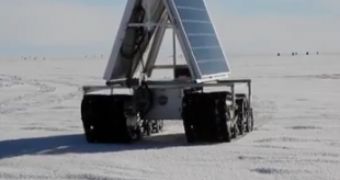Between May 6 and June 8, NASA's GROVER spent many hours collecting information about ice sheets in Greenland.
This mission was intended as a test, which the robot apparently passed with flying colors.
NASA explains that GROVER had little issue executing commands from afar. This means that it is possible to send it to explore remote locations without worrying that it will go haywire.
“When we saw it moving and traveling to the locations our professor had keyed in from Boise, we knew all of our hard work had paid off.”
“GROVER has grown to be a fully-autonomous, GPS-guided and satellite-linked platform for scientific research,” Boise State University graduate student Gabriel Trisca said.
The robot presently stores the information it collects, meaning that it takes a while before researchers gain access to it.
Still, NASA hopes that it will not be long until the robot manages to transmit data in real time.
Check out the video above to learn more about this project.

 14 DAY TRIAL //
14 DAY TRIAL //